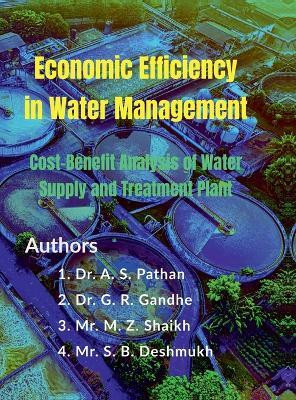Economic Efficiency in Water Management - Cost-Benefit Analysis of Water Supply and Treatment Plant(English, Hardcover, Dr Akram Salim Pathan)
Quick Overview
Product Price Comparison
Benefit costs ratio of conventional surface water treatment plant: A case study of the Farola water treatment plant Tq. Paithan, Dist. Chh.Sambhajinagar (Aurangabad). Rapidly-growing urban p`opulations, competing demands for water, imperfect water quality, and uncertainty of future water supplies contribute to high interests in alternative sources of potable water for many Maharashtra municipalities. The population of Aurangabad in 2011, 2021, and 2031 will be 11,75,000; 15,43,000 and 19,93,000 for that 150MLD; 200MLD and 373MLD water is required. For satisfying this demand huge amount of money is required. In situations where multiple supply alternatives exist, properly analyzing which alternative is the most-economically efficient over the course of its useful life requires a sound economic and financial analysis of each alternative using consistent methodology. This Dissertation discusses such methodology and provides an assessment of the life-cycle costs of conventional water treatment using actual data from an operating surface-water treatment facility located in Farola water treatment plant Tq.Paithan, Dist. Chh.Sambhajinagar (Aurangabad). This facility has a maximum-designed operating capacity of New (WTP) 100 MLD and Old (WTP) 50 MLD, but due to required shutdown time and other limitations, it is currently operating at 94% of the designed capacity New (WTP) (98MLD) and Old (WTP) 48MLD.


